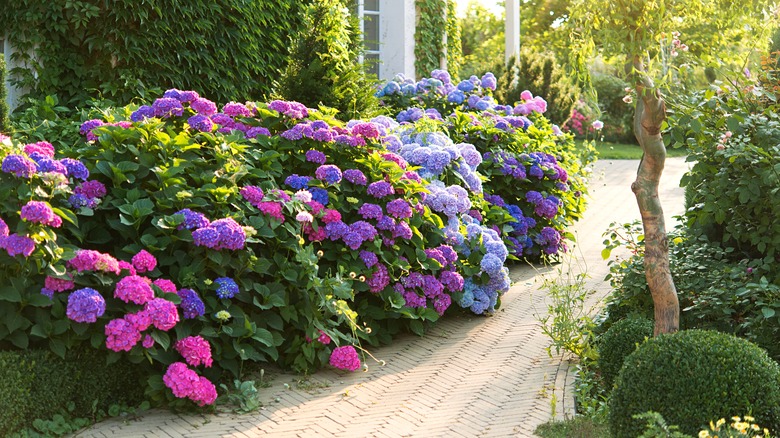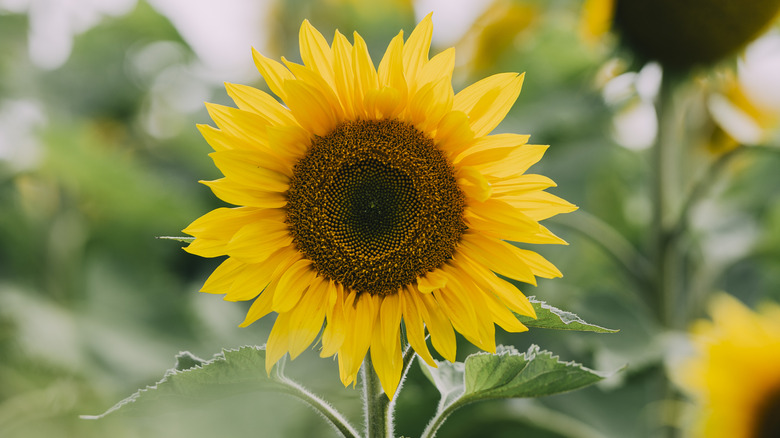Avoid Planting These Towering Flowers Near Hydrangeas
Hydrangeas, especially bigleaf or mop-head hydrangeas (Hydrangea macrophylla), are a popular garden staple as headline plants, accent pieces, or a part of bordering hedges. The same sprouts will uniquely change color based on the pH and aluminum levels of the soil, and gifted hydrangeas can represent a sincere sense of gratitude and understanding. However, you'll want to be careful about planting them too close to sunflowers (Helianthus annuus). That's partly because sunflowers are one of many plant varieties that release toxins that inhibit the growth of others nearby, a characteristic known as allelopathy.
It makes sense why hydrangeas and sunflowers would be considered for the same garden. Both thrive in USDA hardiness zones 5 through 9, though hydrangeas can also grow in zone 10. Bigleaf hydrangeas should be planted in growing mediums like clay, loam, or sand with high amounts of organic matter –any soil that will have good drainage, regardless of the pH level. Any soil should work for sunflowers too, though they prefer something more acidic. You can remedy this easily by mixing sulfur into the soil can decrease its pH levels.
Each plant requires consistent irrigation, particularly for the 11 days it takes for sunflower seeds to sprout, so the ground should be kept moist with drip irrigation or soaker hoses. Unfortunately, allelopathy is not something you can adjust your soil around, so if you're on the fence wondering whether you should plant sunflowers in your garden to begin with, you'll at least want to organize your plots so that they're as far from the hydrangeas as can be.
Allelopathic sunflowers are great elsewhere in the garden
Plants like black walnut are notoriously allelopathic for releasing the toxic chemical juglone, especially concentrated in their roots. Yet, allelopathy can be beneficial to gardeners and farmers in some scenarios. For example, rye and wheat are often grown or cut into mulch to suppress nearby weeds. Sunflowers can serve a similar function when they are treated like a cover crop, but sunflower toxins could be the reason other plants like hydrangeas are suffering in your home garden. An additional reason to avoid planting sunflowers near hydrangeas is that the taller flowers' heliotropism could result in them shading out other plants. But your results on this point may vary. Hydrangeas, broadly speaking, want full sun coverage, but bigleaf hydrangeas can thrive in deep shade and dappled sunlight, too. They may not flower as much in deep shade though.
Bigleafs are a quick-growing, low-maintenance flower that you might be eager to mix into your garden. These shrubs should be given approximately 3 to 6 feet of space to grow, regardless of what plants you're putting around them. While the allelochemicals in sunflowers can be problematic for other plants, hydrangeas are mildly poisonous to humans and pets when consumed. And despite their potential problems, sunflowers are worth growing in their own right. Sunflowers make great companions to crops like tomatoes, attracting leaf-footed bugs and stink bugs that might otherwise damage your produce. The right allocation of space means you can get the best of both worlds in the garden of your dreams.

